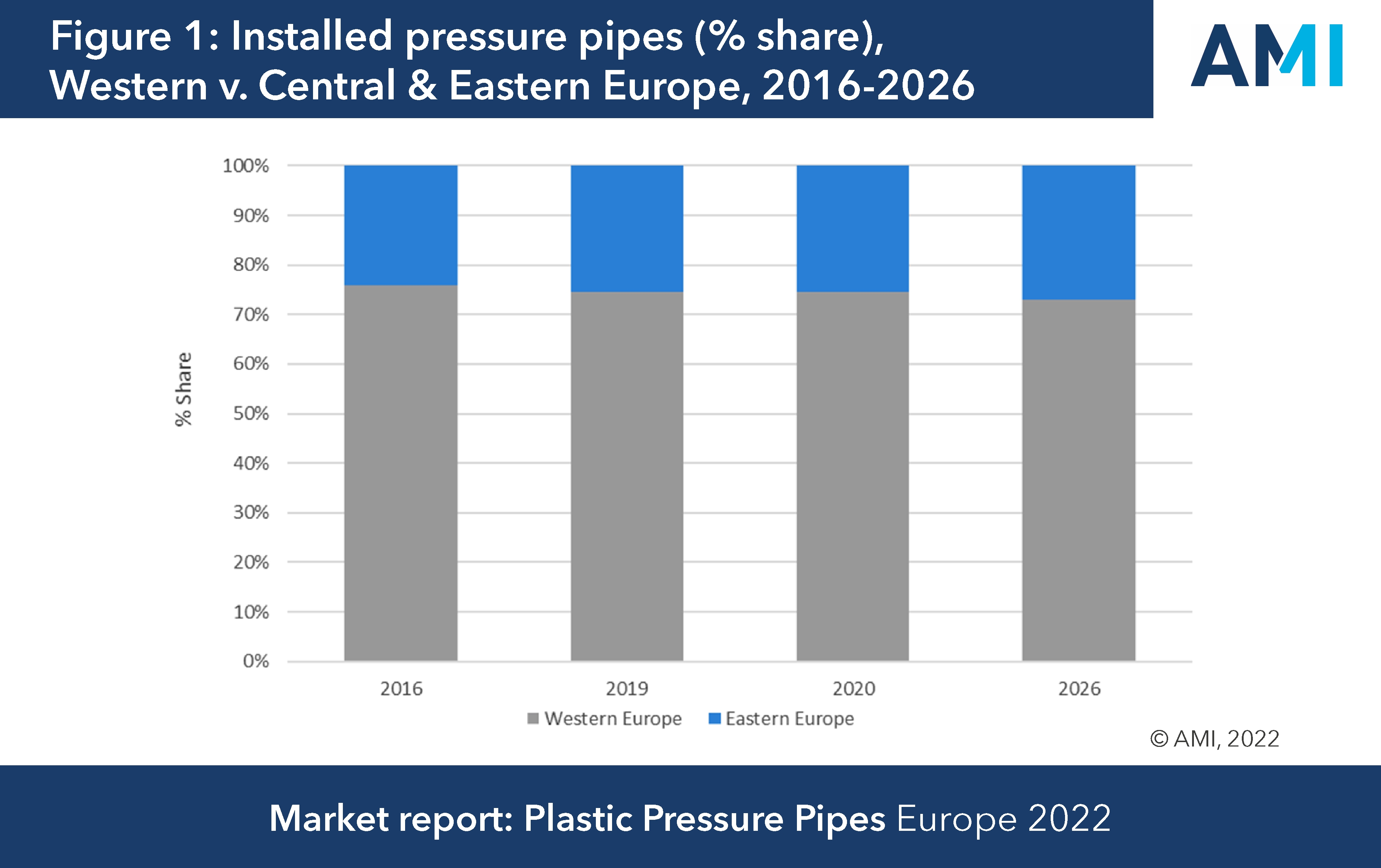New standards for gas and water pipes open new opportunities for Polyethylene while circular economy stimulates R&D in the segment
13 April 2022
AMI Consulting, Bristol, 13/04/2022 - European market for pressure pipes showed strong growth in 2018-2019, which was followed by a significant contraction in 2020 when COVID-19 began to take effect in the region. In this extremely atypical year, the European economy saw a 6.3% decline in GDP in 2020. Construction activity was impacted initially but recovered in the second half of 2020 albeit suffered from supply-chain disruptions some of which continue into 2022.
The market for infrastructure pipes is reputed for its conservatism. At AMI Consulting, we disagree with such characterisation. Admittedly, the market moves cautiously and gradually. But over the years we have seen tremendous changes, which – despite the cautious, gradual adoption rates – can only be described as revolutionary. The industry has seen how, for instance, practically every meter of low pressure gas distribution pipe installed in Europe has been plastic pipe. If nothing else, this example shows unequivocally that the market recognises, accepts and rewards valuable innovation. This will continue to drive demand for plastic pipes for both gas and pressure water systems. The arrival of new standards and regulations, the development of new solutions and inter material competition trends will shape the future of the industry.
Growth opportunities exist in the further substitution of ‘traditional’ pipes (mainly ductile iron), as well as in the development and commercialisation of new plastic-based systems, designed to provide better solutions (in terms of cost/performance) for modern-day needs. Polyethylene pipes continue to gain market share from PVC. At the same time, pricing gap between PE80 and PE100 is decreasing. From a pipe manufacturer’s point of view, this generally translates into a disincentive to use PE80. PE100RC demand in pressure pipes is growing at the fastest rate of all the major plastic pipe solutions. Some markets have seen leap-frog movement from PE80 directly to PE100RC.
EN standards for PE gas pipes (EN 1555) and PE water pipes (EN 12201) are being revised. The equivalent International Standards, ISO 4437 for gas pipes and ISO 4427 for water pipes, will also be updated in the following years. The updating of these standards is expected to enable increased market penetration by PE100RC.
PVC though has been challenged in Europe for several decades on its environmental performance. Developments include the using of biobased raw materials and the use in polymerisation of green hydrogen. There have been several recent announcements of PVC with reduced carbon footprints and even some semi-tech production of PVC with a negative CO2 footprint. PVC is also ahead of other polymers in Europe in measuring volumes of PVC recycled each year, setting and delivering ambitious future goals.
The use of recyclate is rising in many parts of the plastics industry. The need for high purity resins is the main barrier for increased use of recycled material to make pressure pipes. Currently, the use of recyclates is not permitted in pressure pipe production. The industry is placing R&D efforts into circular solutions in order to manage portfolio proactively.
On the other hand, plastics pressure pipes are already positioned as more sustainable to metal, with life spans well over 50 years and a lower CO2 footprint.
Polyolefin pipes could help reduce overall carbon emissions as they are likely to play a significant role in the emerging ‘hydrogen economy’. Running hydrogen through existing gas pipes infrastructure requires stringent risk assessment and will inevitably present challenges which must be considered in design. Nonetheless, there is currently little scientific information on compatibility of long-term exposure and transport of hydrogen through the existing polyolefin gas distribution pipelines.

There are differences in growth in pressure pipe demand between the various European countries and regions. Growth is focussed on central and eastern Europe, where Poland had been the fastest-growing market in the review period. By 2026, the region is forecast to have grown to 26%.
Distribution of pressure pipe producers spans all over Europe, with intense internal trade. Highly regulated market context provides strong barriers to entry for non-European operators. Europe is a net exporter of plastic pressure pipes (smaller diameters mostly) with key destinations in Asia, the Middle East and Africa.
The updated edition of the Plastic Pressure Pipes in Europe 2022 report analyses the market trends in-depth and presents them in an easily digestible format. The report thus constitutes an invaluable tool, aimed at helping companies make informed decisions. The report forms part of a comprehensive series, which further includes Plastic Gravity Pipes in Europe 2022 and Plastic Hot and Cold Water Pipes in Europe 2022.
For more information on please contact sales@amiplastics.com